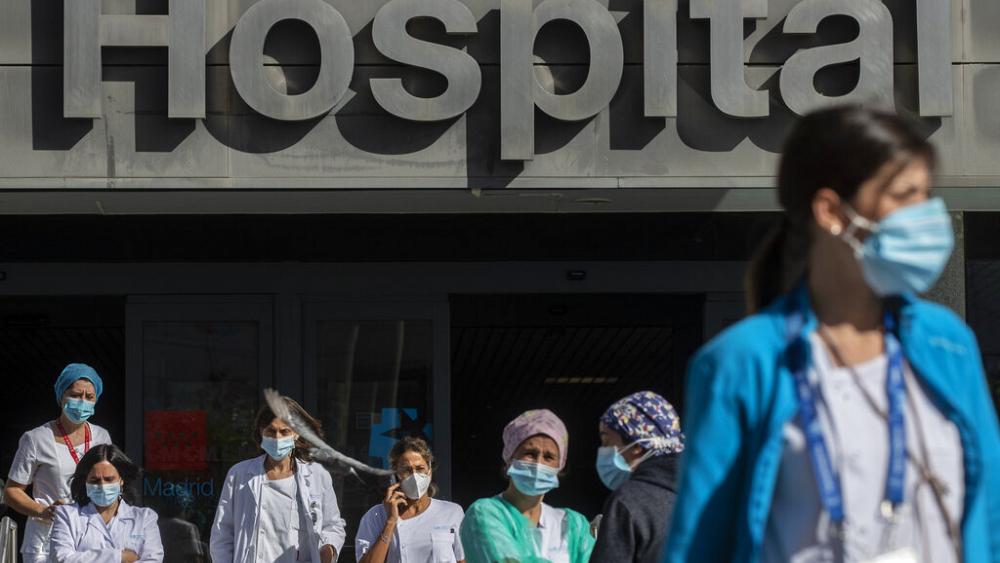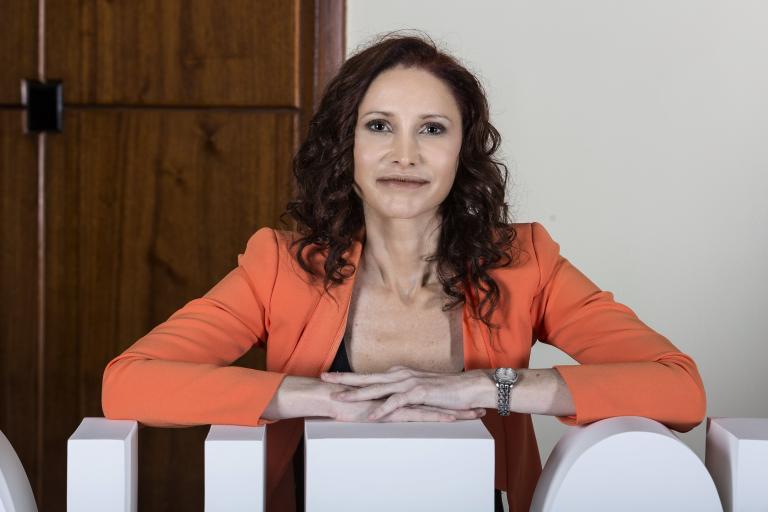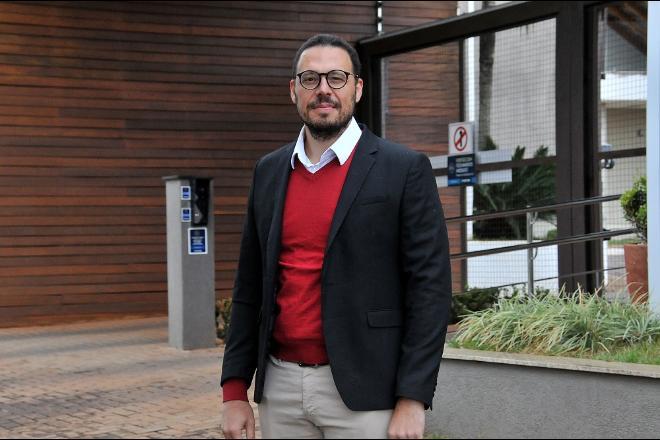RIO DE JANEIRO, BRAZIL – After overcoming the most critical period of the pandemic in March and April, and experiencing a certain normality in the ensuing months, countries in the Northern Hemisphere are watching the film repeat itself.
The increasingly alarming numbers on the disease in Europe and the United States are once again alarming the world and prompting the question: can Brazil experience a second wave of coronavirus?
After the new explosion in cases, the governments of Germany and France announced a partial lockdown to contain the second Covid wave last Wednesday, October 28th.

In Germany, the new lockdown, which will begin on November 2nd, was announced after the country recorded almost 15,000 new cases in 24 hours, the highest number of daily diagnoses since the start of the pandemic.
Soon thereafter, the French government also announced its lockdown, which began on Friday, October 30th. The new measures were implemented after France recorded 52,010 infections on Sunday, breaking its daily case record, and 523 deaths on Tuesday, October 27th, its highest number of deaths since April.
The United Kingdom also recorded 367 additional victims last Tuesday, a record number of deaths since late May. Italy, which also experienced a first destructive pandemic wave, reported 221 deaths last Tuesday, a daily death record since mid-May.
Russia, behind only the United States, India, and Brazil in terms of number of infections, also hit its daily death record this week, with 346 victims last Wednesday.
According to the World Health Organization, daily deaths by Covid-19 in European territory have increased by almost 40 percent last week compared to the preceding week.
In the United States, the picture is equally alarming. The country broke the global record of 500,000 new cases in one week and recorded 80,662 new cases of the disease on Wednesday, October 28th, the highest number of Covid cases ever recorded in a day worldwide; on Thursday, however, the number skyrocketed to 90,000 cases.
To better understand what this second wave signals about the state of the epidemic globally and to try to trace a parallel with potential implications for Brazil, InfoMoney spoke with three recognized health experts. Read their comments below.

Margareth Dalcolmo, pulmonolgist:
Q: Will there be a second wave in Brazil?
Answer: Probably, yes
“The second wave will undoubtedly hit Europe very hard, even in countries with a high efficiency in healthcare, given the growing occupancy of hospital beds with more severe cases. Without a doubt, this could result in more drastic measures by all European governments.
Just as the European countries preceded us in the first wave, this second European wave can be very significant for Brazil.
I even used a metaphor from the Tsunami: we did not know how to benefit from the receding sea, which is what occurs in Tsunamis, and in this analogy represents the European countries that preceded us in this epidemic. The situation in Europe may be a good harbinger of the measures Brazil needs to implement in order to prevent such a severe second wave.
However, we did not know how to seize these first lessons from Europe, so the epidemic hit Brazil very quickly, very intensely, with a rather dramatic result right from the start in the first weeks.
Therefore, the second wave of infections was reasonably expected in Europe after the extensive reopenings during the European summer. By underestimating the infection’s potential, we have allowed room for cases to rise again. A second wave is never discarded, particularly in Brazil.
This second wave is not very surprising, considering that we are speaking of respiratory viruses of non-person-to-person transmission, but with the R, which is that very high rate of community transmission, which reaches levels of one to three in certain situations.”
Q: Will vaccines be released still this year?
“For all that we know and are closely monitoring we will not have vaccines in 2020. All these conjectures demonstrate this.
The development of phase three [last phase before approval] of the various vaccines in trials, including in Brazil shows a failure to reach the number of volunteers and the number of cases of Covid-19 among vaccinated volunteers required to allow an assessment, which indicates that it will take even longer, most likely this whole month of November.
After that, there will still be a deeper study, a request for registration, and the establishment of the vaccine distribution and logistic guidelines. So, realistically, we cannot envisage vaccination in the country before the first semester of 2021.”

Natalia Pasternak, microbiologist:
Q: Will there be a second wave in Brazil?
Answer: Possibly, yes
“The population, both here in Brazil and in the United States and Europe, is exhausted. And no one would like to see their freedom restricted again, so any measure that succeeds in successfully containing the pandemic without the need to resort to a lockdown is valid.
This second wave in Europe should be seen as a wake-up call for Brazil, so that the country may be prepared for a potential second wave here, no matter how different the realities among countries may be.
We cannot afford a position where we magically think that the second wave only occurs in other countries. It’s more or less the same magic thinking that we had in January when we saw the cases rising in Europe and we thought they wouldn’t reach us. It’s the time to look at this warning signal with caution to prepare for a potential second wave in Brazil as well, rather than thinking that it will never happen here.
A second wave of infections is occurring in several countries, and here in Brazil it shouldn’t be any different, due to countless factors and variables. While we lack more effective solutions like a vaccine, we know that the virus isn’t gone, it is still circulating among us, a second wave of infection is always expected.”
Q: Why is the second wave happening?
“A pandemic is never caused by one single factor. But a simple way to exemplify this is to understand that the general numbers of a pandemic depend on the number of people susceptible to contagion, who are circulating.
The virus is transmitted from person to person, it needs people to be in contact. So, when a good part of the populations is confined, in quarantine, avoiding contact with other people as much as possible, this transmission rate drops.
When we start to reopen and reinsert these people into circulation in the city, the rate of community transmission rises, because the virus finds more susceptible people, who were protected before, because they were not in circulation.
In Europe, particularly young people have started moving again because of the exhaustion that quarantine itself causes. We see more young people in crowds and going more often to restaurants, bars, parties, which greatly increases the rate of community transmission and ultimately leads to a second wave.
It is worth noting that this is happening in some U.S. states, but I stress that we should look at these countries precisely as a precautionary measure.”
Q: How to try to mitigate the impact of a second wave in Brazil?
“Again, Brazil must prepare itself for this scenario by trying to achieve proper communication with society, so that we do not repeat the same mistakes of the start of the pandemic. It is essential to effectively count on the cooperation of society, noting that it will be more difficult now because the population is tired of a prolonged and poorly conducted quarantine, which produced few results.
The quarantine could have produced more representative results, so this causes frustration among the population. And it is with this frustrated population that we will have to engage in a good effective communication, that will bring the population closer to scientists, so that we may rely on their cooperation to prevent a very severe second wave in Brazil.
The measures that will reflect more directly on our number of cases and deaths are to effectively communicate with the population, to rely on their cooperation; implement good quarantine measures, with physical and social distancing; and make people aware of hand hygiene, of the need to avoid crowds and encourage the wearing of masks.
When we relax and place more people in circulation, the transmission rate tends to rise. This is simply how it works: the transmission rate is not static, it is mobile, it depends precisely on people’s behavior and measures.”
Q: Will vaccines come out this year?
“Regarding vaccines, it is quite irresponsible to promise delivery dates, as none of the vaccines has completed phase three trials.
Until then there is no way to discuss arrival dates, delivery dates, production dates, and vaccination dates. It is not possible to set a date for vaccination and promise doses if we still can’t promise that these vaccines will work, to what extent they will work, and when we will have enough doses to be able to organize vaccination campaigns and effectively vaccinate people.
So, between completing phase three, the approval by regulatory agencies, and having the vaccine available to the whole population in health centers, there is an interval of about six months.
A reasonable measure would be to consider mid-next year, if all goes well if there is nothing in the way that hinders the completion of phase three.
We should not start promising delivery dates for these vaccines until then. A safe and effective vaccine is the most efficient way to start controlling the rate of transmission of an epidemic.
And this does not mean that once vaccination starts, the pandemic is over: it is a process that lasts until we see the practical effects of vaccination. But without a vaccine, we will have to constantly monitor the numbers to ensure that the transmission rate remains low. And it is possible that occasional outbreaks occur or that the disease, over time, becomes endemic or seasonal, but we cannot predict this.
In order to understand how the virus will behave from now on, we will have to rely on a good monitoring and tracking system, with many tests to quickly detect local outbreaks.”

Julio Croda, infectologist:
Q: Will there be a second wave in Brazil?
Answer: Yes
“Countries in Europe have avoided new lockdowns because the economic impact of the first wave was too great. They will establish more restrictive measures only if there is a significant increase in hospitalizations, which does not occur in the whole of Europe, but only in some cities.
The state of São Paulo itself has focused its monitoring much more on the rate of ICU occupancy than on the speed of infection. The higher the intensity of the first wave, the more collective immunity the general population has.
Of course, we need to consider the decline of antibodies, but re-infection is a rare phenomenon, with less than one percent occurrence. So the majority of countries that had a large circulation of the virus before may have a second wave lower than the first.
And this is what we need to observe more closely in Europe. There are still many susceptible people in Europe because the initial lockdown measures were very effective. Perhaps after Asia, Europe is the only continent where it was possible to implement these more restrictive circulation measures. So, the greater the success in containing the virus in the first wave, the greater the concern with the second wave, particularly in this early winter in Europe.”
Q: How to mitigate the impact of a second wave in Brazil?
“We need to prepare the healthcare service for patients and, particularly, almost a year after the first case in China, many countries have prepared to conduct what we call contact tracing, which means identifying cases early and enforcing localized isolations to prevent more severe lockdowns.
Regarding the Brazilian specificities, the epidemiological curve here is a little different, because we were unable to achieve a lockdown in Brazil, we had a plateau of over 90 days with a thousand daily deaths and several states and cities never recorded isolation above 50 percent. Proportionally, more people acquired the virus and died here than in Europe.
However, what we can expect from this second wave in Brazil: we need to be vigilant because here we had the release of the spending cap, with the war budget and this budget is not planned for 2021.
The Ministry of Health’s budget is expected to drop next year, so if we have a second wave here, we may be less prepared than in the first wave, as the funding will not be the same as it was in the first wave, despite all the expertise we have gained in treating patients. This may trigger a significant escalation of the virus in the coming months, we need to be vigilant.
A second wave was already expected, as there are still many susceptible people and there is no vaccine, which would be the definitive solution. So, because there is a seasonality of respiratory viruses, there is a trend towards an increase of cases in different periods.
We have to be very attentive to what will happen in Brazil’s North and Northeast with respect to this second wave, and then we can understand how this second wave will behave throughout the rest of Brazil.
This second wave was, indeed, predictable to scientists and experts. Our concern is that it is very difficult to implement distancing measures again, given that society is clearly overwhelmed by both the economic and psychological impact.
It is very difficult to accurately predict when or how this second wave should hit Brazil, but we need to understand that we cannot rule anything out. The situation in Europe shows this, it is difficult to retain control.
Brazil has never achieved adequate isolation, so we will have to deal with collective immunity, we need to maintain the distancing, prevention, and hygiene measures. In addition to investing more in contact tracing measures.
In this herd immunity issue, due to the high number of people who have already been infected in Brazil, we can note that a good part of this population now has a certain degree of protection against the disease, but it is very difficult to analyze this quantitatively.
Many states have not yet been able to structure a testing network. Brazil still tests very little, does very little contact tracing. Although some states have progressed on these issues, we still need to extend testing at this time when cases are dropping and train the teams to better test and maintain preventive measures.
Testing more, training better, and maintaining restrictions are the three pillars to prevent more extreme measures. This all needs to be stressed now, in this inter-epidemic period, before a new wave. This is the time to plan and contain.”
Source: InfoMoney

